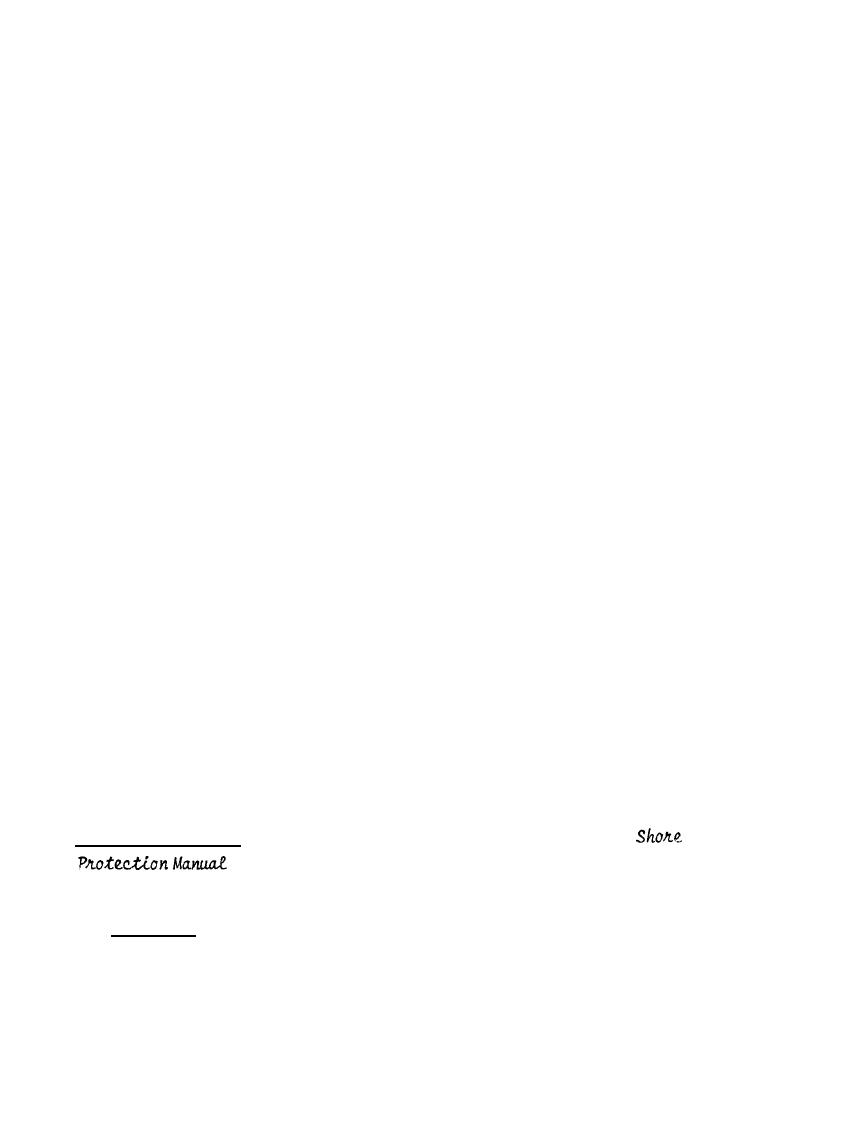
CETN-III-10
3/81
If the updrift groin in a series is constructed first, then the down-
drift groins may fall in the erosion zone of the updrift groin resulting
in the loss of any sand that might have filled the compartments between
groins.
This can be remedied, if some erosion of the downdrift beach can
be tolerated, by building the most downdrift groin in the series first,
then allowing sand to accumulate against it before the next groin updrift
is built. The groin construction would then continue in an updrift
direction until the system covers all the problem shoreline.
If it ap-
pears this procedure produces unacceptable erosion of beaches downdrift
of the groin field, then the natural accretion updrift of the groins
will have to be supplemented by artificial beach fill. The recommended
practice is to provide beach fill any time groins are constructed.
Groins are unable to control or retard offshore movement of sand; and,
consequently, they are unsuitable where this onshore/offshore movement
is dominant.
Short groins may induce sip currents that jet the littoral drift past
the end of the groins and deposit the sand further seaward than the nor-
mal offshore bar. This sand may then be lost to the littoral system.
Although rational methods are not available for determining precise de-
sign dimensions to insure rip currents will not form, the designer should
be aware of this possibility and recognize that construction of short
groins may require later modification by increasing their length, and/or
reducing the spacing between groins by constructing additional groins
betweenthose already built.
All groins and groin systems should be carefully monitored after construc-
tion to assure that they perform as designed.
STRUCTURAL ASPECTS:
The design of groins is discussed in the
(SPM). Briefly, the design characteristics of groins
are as follows:
1 . Alignment.
Alignment at 90 degrees to the shoreline is illustrated
in Figure 1. A l i g n m e n t 3 at various angles to the shoreline have been
tried, as well as projections placed at the end of groins to form "T" or
"L" shapes; however, experience indicates that in most cases straight
structures perpendicular to the shore are just as effective, and they are
easier to construct.
3


 Previous Page
Previous Page
